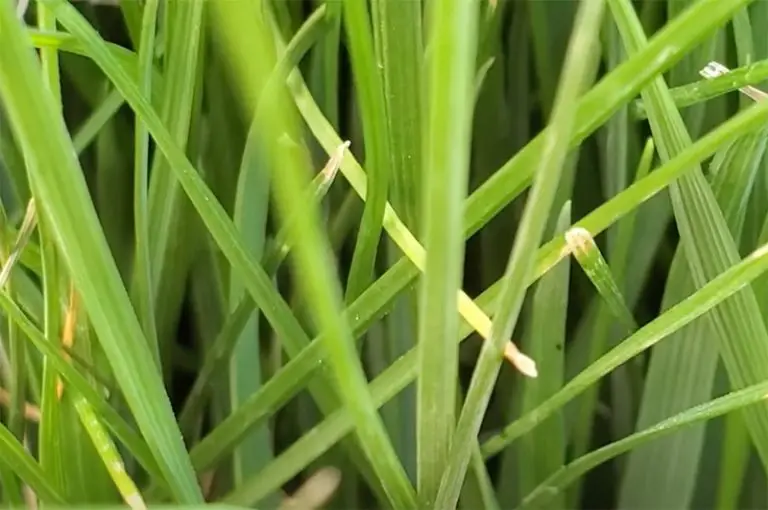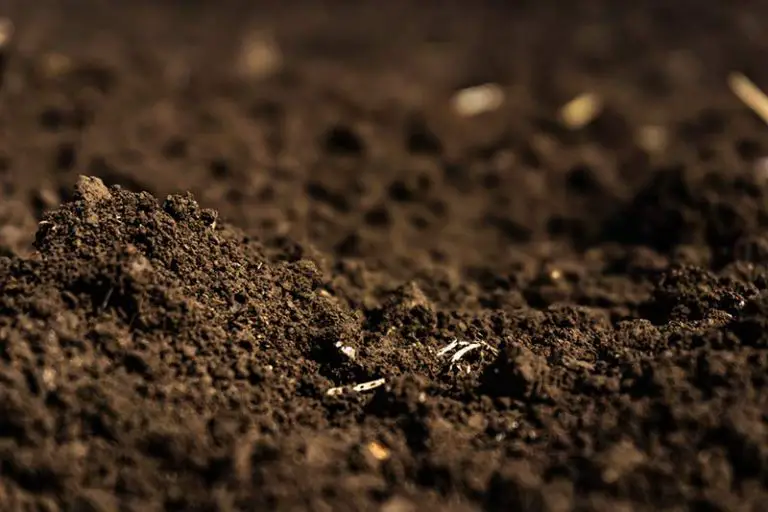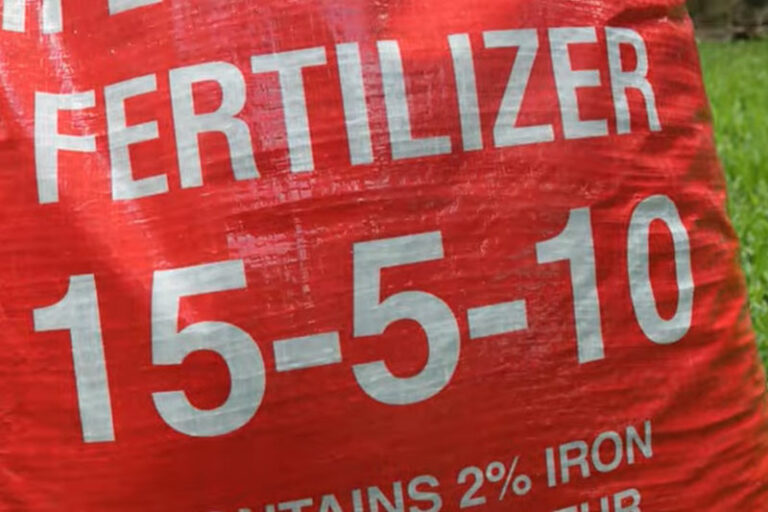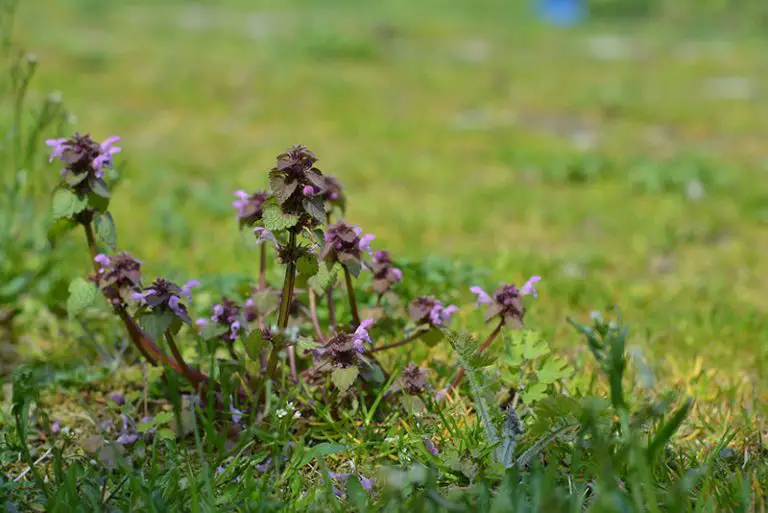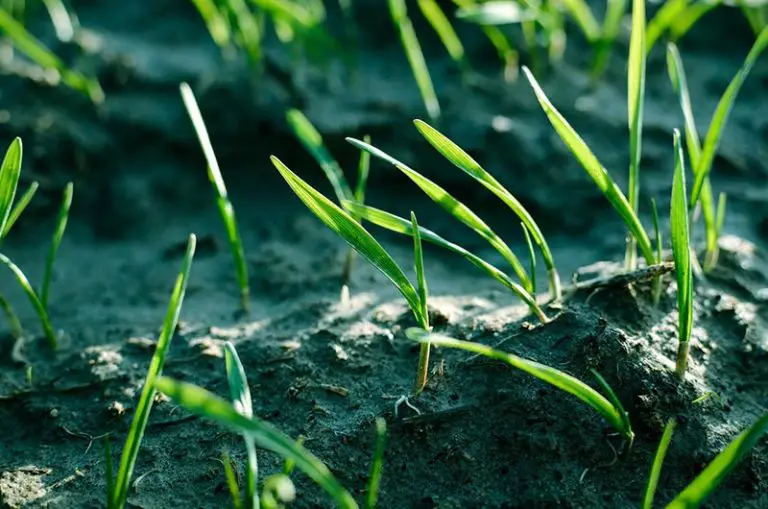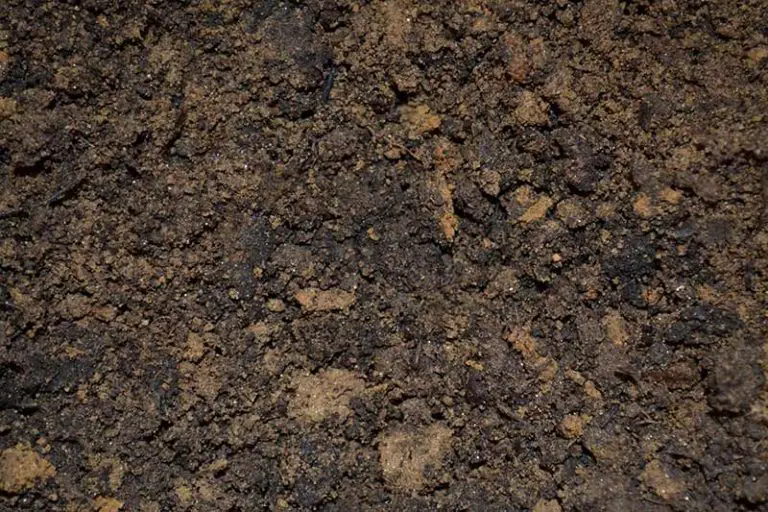When and How Often to Fertilize Your Lawn
Whether you’ve always been lawn-proud or are just getting into maintaining your grass-clad yard, knowing the proper standards for fertilizing is a must. Thankfully, you’re in the right place to know how often to fertilize lawn, what type you should use, and everything in between.
Why Should You Fertilize Your Lawn?
Before we get started, we’ll discuss why fertilizing is important in the first place.
#1 Fertilizer Works With Essential Soil Nutrients
Your lawn can’t remain healthy without high-quality soil. Typically, fertilizer is the quickest, less time-consuming way of ensuring your soil meets the proper specifications for a luscious lawn.
As time goes on, the soil becomes less nutritious and will eventually lack the necessary minerals to support a healthy, green lawn. So, you need to replace the nutrients for your grass to survive. It’s the only way to get that all-important full, non-patchy back (or front) yard.
#2 Consider Fertilizer Food for Your Lawn
Can you survive long-term without food? Nope! And neither can your lawn.
Grass requires the right amount of the following three things in order to live its best life:
- Sunshine
- Water
- Soil
However, you can’t just expect any old soil to work its magic. It needs to have these key elements:
- Nitrogen (N)
- Potassium (P)
- Phosphorous (K)
Without fertilizer, your soil won’t contain a beneficial quantity of the above nutrients. Feeding your lawn is just as important as feeding your body!
#3 It’s Easy
Contrary to what you might currently be thinking, it doesn’t take a green thumb to fertilize a lawn — even if you don’t feel like paying for someone to come and do it for you.
Later on, we are going to discuss exactly how to spread fertilizer effectively so you can DIY at home. However, all fertilizer containers come with step-by-step directions, so you’ll be good to go as soon as you get back from the garden center (or receive your package from Amazon!).
#4 It’s a Cost-Effective Solution For a Lush Lawn
Cost plays a huge part in everything we do (sad but true). Thankfully, lawn fertilizer is usually cost-effective, regardless of the brand. Not to mention that nothing but basic maintenance is required following fertilization.
If you’re interested in the average fertilizer cost, take a look at the table below:
| Type of Fertilizer | Average Cost |
| Synthetic Fertilizer | $40 to $90 to fertilize a 5,500 to 6,500 sq. ft. lawn |
| Organic Fertilizer | $75 to $150 to fertilize a 5,500 to 6,500 sq. ft. lawn |
Synthetic fertilizer is, as you can tell, far cheaper than organic. Why? Because they are easier for manufacturers to make. However, you will have to pay the price for organic fertilizers if you aren’t comfortable using chemicals.
Hopefully, the price for organic fertilizers will continue to decrease thanks to the increasing amount of them on the shelves.
#5 Your Grass Will Grow Faster
As we previously mentioned, your soil won’t hold the necessary nutrients for grass health on its own. However, fertilizing your lawn can not only maintain its health but can also speed up the growing process. By using fertilizer, you are guaranteeing a healthy, lush lawn in a much faster time.
#6 It’s Eco-Friendly (If You Choose an Organic Fertilizer)
When you use organic fertilizers correctly, you can feel good about having a healthy lawn and a healthy planet. You could even go one step further and use your own lawn clippings as a cheap, earth-friendly fertilization solution. In one of the sections below, you’ll discover how to make your own fertilizer at home — perfect for those of you on a strict budget.
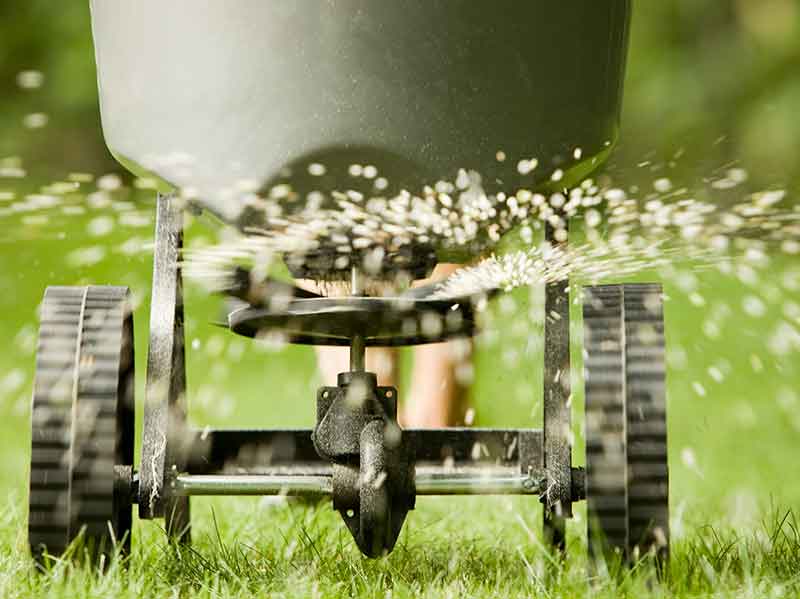
When and How Often to Fertilize Lawn
When you think about fertilizing your lawn, there are several crucial factors to consider. The factors are as follows:
- The type of fertilizer you plan to use
- The application times
- How often you water your lawn
- How you plan to apply your fertilizer (this is often dictated by the type you use)
Ideally, you should fertilize your lawn four times a year with a slow-release formula. A general rule of thumb is to feed it to your grass during early spring when your soil is at 55 degrees Fahrenheit.
You will know when this happens since lilacs sprout at this temperature. However, if you want an accurate reading, purchase a lawn thermometer.
The state of your lawn — i.e., whether it’s new or established — will heavily impact your fertilization habits and may change the advice above.
Let’s take a look at how often to fertilize new grass first.
How Often to Fertilize Lawn with New Grass
Whether you’re starting a lawn from plugs, sod, seed, or spot treating a patchy lawn, you need a starter fertilizer to get growth started. Fertilizing new grass generally requires a fertilizer containing extra phosphorus to help the roots curl deeper into the soil and gain strength.
You should search for an NPK (nitrogen, phosphorus, and potassium ratio, discussed in more detail later) ratio of 22-23-4 to get an ideal mix of all the lawn nutrients. Ideally, you should find one that contains iron too so you can achieve a deep green color.
If you are using plugs or seeds, apply the fertilizer with a lawn spreader before you plant them. If you’re using sod, fertilize once you have already placed it.
Tip: Take care not to use weed fertilizers or crabgrass preventer fertilizers when your grass is under 4 weeks old.
How Often to Fertilize Lawn with Established Grass
Once your new grass turns into an established lawn (or if you’re starting with an established lawn), you need to choose a fertilizer plan fit for the type of grass and season.
Generally speaking, you should fertilize following this plan:
- In Early Spring — Between February and April before crabgrass seeds germinate.
- In Late Spring — Between April and June when existing weeds start actively growing.
- In Summer — Between June and August to strengthen the lawn against the heat and droughts.
- In Late Summer or Late Fall — Between August and November when the grass slows its growth and gets ready for winter.
But, it’s always best to fertilize according to your specific grass type.
Fertilizing Cool-Season Grasses
As you might imagine, cool-season grasses grow in colder climates. The great thing about this type of grass is that they keep their stunning green color throughout the year as long as they have cold winters and cool summers. Generally, they prefer an average temperature of 60 to 75 degrees Fahrenheit.
The most common grass types that fall under the cool season category include:
- Bentgrass
- Fine Fescue
- Tall Fescue
- Kentucky Bluegrass
- Annual Ryegrass
- Perennial Ryegrass
You should aim to fertilize cool-season grass three times a year in the following manner:
- Fall
- Fall
- Spring
The fall feedings are the most important for this style of grass and should be conducted around 6 weeks prior to the first frost. Early to mid-September is a great time for this usually. Why? Because the roots will have enough time to take in the extra NPK before settling down for the winter.
Once the frost is over, you should fertilize again, and then once spring comes around, lightly dust with fertilizer to facilitate growth.
Fertilizing Warm-Season Grasses
Warm-season grasses thrive in temperatures between 80 to 95 degrees Fahrenheit in their growing season. They go dormant in the winter and turn brown, leaving with you a sad-looking lawn for 3 to 4 months a year.
The most common grass types in this category include:
- Zoysia
- St. Augustine
- Centipede
- Bermuda
- Bahia
- Buffalo
Beginner gardeners prefer warm-season grasses since they’re a lot easier to look after. You only need to feed them in the spring once they are waking up after the winter!
With that said, they aren’t as hardy against fertilizers. So, waiting to spread the nutrients until you’re 100% sure they’re out of dormancy is a lot better than using it too early.
Some lawn-lovers like to feed warm-season grass a few times throughout the active growing season. This isn’t necessary. But if you feel like your lawn could do with a boost, conduct a soil test before over-feeding.
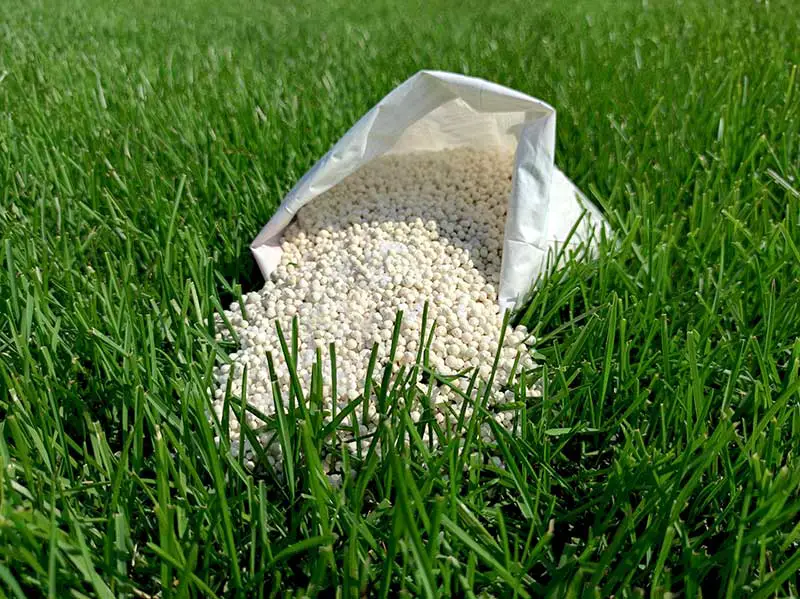
What Type of Fertilizer Should You Use For Your Lawn?
Now that you know how often to fertilize your lawn, it’s important to choose the right type of fertilizer formula for your particular grass desires. To do this, you need to first understand the fertilizer numbers and element contents.
Understand The Grass Fertilizer Numbers
Regardless of the type of grass you have, it will benefit from extra macro-nutrients. These nutrients are as follows:
- Nitrogen (N)
- Phosphorus (P)
- Potassium (K)
The above elements are often symbolized on grass fertilizers as NPK (i.e., the chemical symbols for the above nutrients). If you are worried about the right ratio for your lawn, a soil test is the best way to smooth out any concerns. This test can either be done by sending a soil sample to a professional testing laboratory or by carrying it out yourself with an at-home testing kit, such as this handy Soil Testing Kit from Luster Leaf which can give you a good idea of the NPK levels in your soil, in addition to its pH level. See our article How to Test Soil pH for more information on this process.
Often, you want to opt for a 10-10-10 ratio since this is a balanced food with equal parts of all three nutrients. However, your grass variety, soil pH, organic/synthetic, and the timing of your fertilizing will dictate which formula you ultimately pick.
Consider The Different Fertilizer Types
Once you have figured out which ratio you want to go with, it’s time to decide on the type of lawn fertilizer you want to utilize.
#1 Time-Release Fertilizers
There are two types of time-release fertilizers — slow-release and quick-release. They are designed to feed your lawn over several months, preventing you from forgetting to feed your lawn again a few weeks later.
Slow-release formulas allow your grass to absorb the nutrients they need gradually. This stops the important minerals from permeating deeper into the soil and missing the lawn’s roots entirely. To get a pictorial reference of how slow-release fertilizers work, take a look at this graph by LawnSmith. Our recommendation is this Slow-Release Fertilizer from EcoScraps, as it will continue to fertilize your lawn with a range of essential nutrients for up to three months after it has been applied.
Quick-release formulas, on the other hand, are designed to be used immediately by the grass and last between 4 and 6 weeks. If you need a fertilizer that will get to work on your lawn straight away, we suggest using Scott’s Liquid Turf Builder for an instant boost of nutrients. This fertilizer will get to work faster than a slow-release formula, however, it will require more regular applications.
#2 Granular Fertilizers
Granular fertilizers come in both quick-release and slow-release formulas. They are popular among the home gardening community thanks to their ease of application.
Professionals, however, tend to favor granular fertilizers when base feeding a lawn because of the following reasons:
- It’s quick and easy to apply.
- A slow-release granular fertilizer can feed the grass for around three months.
- It is the only way to get the required nutrient quantity into the soil cost-effectively in one go.
- It is great for general lawn health.
Try this Organic All-Purpose Granular Fertilizer from Jobe’s – it has a well-balanced NPK ratio of 4-4-4, and will continue to fertilize your lawn and/or garden plants for an extended period of time after it has been applied as it is made from an organic formula.
#3 Water-Soluble Fertilizers
Water-soluble fertilizers, also known as liquid fertilizers, are applied using a hose applicator. They are quick to apply and rapidly injects the grass with the nutrients it needs to grow fast.
Usually, professionals will use liquid fertilizers when demand feeding (i.e., a non-routine treatment that is akin to a “snack” for a human) for the following reasons:
- The grass responds incredibly quickly to it.
- Either quick- or slow-release formulas can be used in liquid form.
- It enables feeding whenever needed or expected.
- You end up using less fertilizer thanks to the fine spray. However, this often means that you’ll need to apply it again after a few days to ensure your entire lawn is properly treated.
- It’s easy to withhold feed when weather forecasts change.
#4 Organic Formulas
Organic formulas can come in the following forms time-release, liquid, and granular. They are made using once-living organisms and the byproducts of these organisms.
They are undoubtedly a safer, less damaging solution than synthetic formulas when utilized correctly since they won’t damage the grass leaves. Organic fertilizers mimic the natural soil microorganisms and thus, improve the overall structure of the soil. They generally have a lower content of potassium, nitrogen, and phosphorus than synthetic fertilizers.
While this might sound like a bad thing, organic formulas actually feed your grass for a longer period. Although, it will take a longer time to see the results. For example, this Organic All Season Lawn Food from Scott’s has a NPK ratio of 9-0-0, meaning it will continuously supply your lawn with nitrogen to keep your grass green, lush, and healthy.
#5 Synthetic Formulas
Unlike organic fertilizers, synthetic formulas provide very quick results due to the high concentration of chemicals. They are typically water-soluble, hence why the nutrients are absorbed almost immediately by the grass.
The rapid lush color offered by synthetic fertilizers typically disappears after a few weeks. Using organic formulas ensures a long-lasting luscious effect. But, if you are set on using synthetic, you need to keep applying the fertilizer regularly to ensure the color stays put.
The worst factor of synthetic formulas is the fact that they can burn the grass leaves if you don’t follow the instructions correctly.
#6 DIY Fertilizer
If you don’t feel like spending money on fertilizer, you can pull out some DIY skills and make a very effective treatment at home. Follow the steps below to do it yourself:
- Mow it — This is by far the easiest way to develop and maintain a healthy lawn. Regular mowing sessions will increase the density, improve the color, and decrease the patches in your grass.
- Leaf clippings — When you mow your lawn, try to mow any fallen leaves into it and leave the clippings wherever they fall. As you continue to keep up with your mowing regime, the clippings will compost into the soil and add necessary nutrients.
The grass and leaf clippings combined will act as a carbon and nitrogen source which will rapidly break down and help the soil.
How to Apply Lawn Fertilizer
You’re almost a lawn fertilizing expert by now! So, let us take a quick look at how you should apply it for the best results.
- Check the label — Regardless of the fertilizer you buy, the package will tell you the proper and safe usage. Always follow the label to avoid injury or over-feeding.
- Mow — One or two days before you decide to fertilize your grass, mow the lawn. This will allow the formula to properly permeate.
- Set the spreader — Take a look at the label again and set the spreader according to the manufacturer’s recommendations.
- Start fertilizing — If you are using a drop spreader, you should start by spraying two strips across the ends of your lawn. Then, go back and forth, taking care to overlap each row slightly to ensure even coverage. If you are using a broadcast spread, work from the outside to the inside. Again, you should overlap as you move.
- Sweep the excess — After you’re finished spraying, sweep any excess fertilizer off surfaces (driveways, sidewalks, etc.) to stop stains.
- You’re finished!
Fertilization is fairly easy when you know how to do it. Just take care to shut the hopper whenever you stop and turn. This will stop the fertilizer from piling in one area.
Why Shouldn’t You Over Fertilize Your Lawn?
The more fertilizer, the better, right? Wrong! Here’s why you should follow the packet’s advice every time:
- Over-fertilizing leads to a weakened root system and overall less-healthy soil due to the accumulation of salt.
- It may increase insect damage due to the too-rapid growth influxes.
- Your grass will need excessive amounts of water due to the quick growth.
- Extra phosphorous causes more algae in the ocean and streams. This is a toxin to whales, otters, dolphins, and sea lions.
We have provided general guidance in our article How Much Fertilizer Per Acre of Grass to help you work out the best application rate of your chosen fertilizer.
How Often to Fertilize Lawn: The Bottom Line
And there you have it; you’re about to have one lush, healthy lawn!

